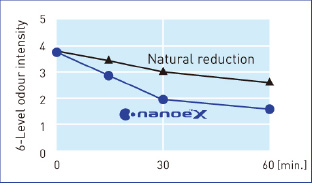How to perfect your supermarket’s customer experience
During the heights of the Covid-19 pandemic, the supermarket became an even more important part of our lives.
As an essential service – and at times one of the few places that people were allowed to go – grocery shops became a cornerstone of our mental and physical health.
In the UK, one four-week period ending June 21st 2020 showed an increase of 17.7%*1 in the sales volume of food and drink for home consumption, when compared with the previous year. While people were reducing the frequency of their visits to supermarkets, they were clearly purchasing more items during each trip.
At the same time, supermarket operators were suddenly forced to tackle a whole host of challenges in order to provide a safe shopping experience for customers, from enhanced cleaning to removing open displays or sample tastings and ensuring proper distancing for staff and customers alike.
Which means that today, customer sensitivity to hygiene remains high. So how can operators provide an enjoyable and tantalising experience, whilst also maintaining high levels of safety and cleanliness?
Pandemic pressures
During the pandemic, running a supermarket became harder than ever. With waves of staff absences and threats to supply lines, keeping stores open and shelves stacked was a significant challenge.
Equally, surges of panic buying affected supply as people stockpiled produce for fear of supplies running short. A series of Ipsos surveys*2 in early 2020 found that the majority of respondents expected shortages to be caused by panic buying, rather than supply chain disruptions – approximately 90% of people believed this in the UK. This belief, of course, only added fuel to the stockpiling fire.
For organic stores in particular this exacerbated a long-standing issue. As one operator explained, “When something is out of stock, customers get angry because the product is not in the store. It happens a lot in the organic sector. They are used to other supermarkets where everything is always available, but the manufacturing line of organic products often runs out of raw materials.”
At the same time, customers became highly conscious of the health risks of public areas, whether because of airborne or surface transmission, and supermarket operators took on a bigger burden of responsibility for protecting their shoppers – and easing their anxieties.
That meant enforcing strict heightened cleaning standards, such as regular sanitisation and restricting the handling of goods. “We had to clean the shopping carts, and we provided sanitiser at the entrance, ” one German operator explained. “In the beginning, people were scared so we cleaned more and more.”
This, unsurprisingly, put an additional strain on staff time, when staff absences were already applying extra pressure.

Many of your customers’ concerns remain
Today, customers continue to expect heightened protocols when it comes to the safety of their food, and of their shopping experience. With restrictions loosening in certain countries – or disappearing completely – it’s no surprise that some customers remain more cautious than others. So it’s important that you make it clear that you continue to take their health and safety seriously.
At the same time, they expect you to keep up the standard of their shopping experience. That might mean having fresh produce on open display, keeping shelves well stocked and organised, and having plenty of helpful staff on hand to assist.
After all, providing an appetising experience is key to persuading customers to return to your store.
Tip – Make your customers as comfortable as possible
Sanitisation can be a tricky business around food. Customers want to know standards of cleanliness are being upheld, but those who are especially health-conscious can also be concerned by the use of chemical agents near food products. They might worry that certain chemicals could actually contaminate the goods and be bad for their health.
Equally, it’s important to consider the longer-term return of any solutions you use. As one operator with a major franchise explained, “We use chemicals to sanitise the stores, but we are always expected to be consistent with cost efficiency.”
Therefore, in maintaining your increased cleaning routine, you should focus on the use of sustainable, safe, and naturally derived materials to tackle health risks. That, coupled with a sensitive use of your space so that customers don’t feel hemmed in, will make for a much more enjoyable and efficient experience for everyone.

Air quality and odour control have never been more important
Temperature and humidity control have always been crucial when it comes to creating a comfortable shopping environment – and protecting your produce. As energy efficiency and environmental impact have become increasingly significant issues, operators have transitioned to using closed refrigerators and more carefully controlling temperature and humidity.
At the same time, the pandemic has significantly raised public awareness of other dangers that lie all around us. The air contains millions of invisible dust and dirt particles, as well as viruses, bacteria, mould, and PM 2.5 particulates.
These can be very damaging to our health, and are of particular risk in enclosed, confined, and busy spaces. During peak times, supermarkets can become all three of these things.
In addition, customers are also now much more sensitive to odours that negatively affect their shopping experience. Supermarkets can be particularly prone to strong smells – either from certain types of produce such as fish or fruit, or from rotting or decaying goods. Depending on your climate, the likelihood of bad smells might be even greater, with insects and pests speeding up food decay and adding to the odours.
On the other hand, smells – when done right – can be a positive part of a supermarket experience. As one supermarket operator acknowledged, “We have a certain smell because of our products: When you go to an organic store, it has the smell of nature, and people enjoy it.”
Tip – Get your environment right
It’s well known that temperature and humidity changes can cause havoc with your produce. As one operator put it, “The humidity, in the area of chilled foods, is sometimes complicated as the temperature goes up, and it is a big problem that the foods are wasted and we have to throw them away.”
Getting those elements under control – as well as odours – and providing quality air can go a long way to improving your customers’ supermarket experience and reassuring them that they’re shopping in safety.
Which is why operators are increasingly turning to air conditioning that incorporates purification and odour control.
Introducing nanoe™ X – quality air for a quality shopping experience

An air-conditioning system with integrated nanoe™ X releases nature-derived hydroxyl radicals into the air to inhibit viruses, bacteria, mould, PM 2.5 particulates, and odours. It helps you maintain a hygienic and pleasant supermarket environment without the need to add any additional cleaning practices to your regime.
Hydroxyl radicals are unstable molecules that readily react with elements like hydrogen, inhibiting the activity of pollutants. nanoe™ X brings this natural freshness indoors, creating hydroxyl radicals with a vastly increased lifespan to create an ideal interior environment.
It can also provide 24-hour deodorisation via easy wifi and remote controls, so that you no longer need to worry about nasty smells losing you business.
And by displaying information stickers explaining your use of this cutting-edge technology in your storefront, you can reassure potential customers that you’re taking their health seriously.
Adhered bacteria*3
O157

Durian odour*4

nanoe™ X improves the environment throughout your store rather than just in one location, so it’s a smart move for tackling your air quality, temperature, humidity, and odour control needs in one fell swoop.
Your environment is key to happy shoppers
Reassuring your customers that the environment they’re shopping in is safe and hygienic remains crucial to stay competitive in a busy marketplace. With people now hyper-sensitive to cleanliness issues around air quality and odour, there’s never been a better – or more important – time to create a comfortable, welcoming, and pleasant environment in your supermarket. And that means dealing with the invisible threats in the air, and controlling temperature, humidity, and smells.
With its ability to tackle all your potential problems in just one device, air conditioning integrated with nanoe™ X technology can help.
[Note:]
*1 Statistic taken from Public Health England’s November 2020 report, ‘Impact of COVID-19 pandemic on grocery shopping behaviours’
*2 Statistics taken from Ipsos surveys, as published by Statista, March 2020
*3 Adhered bacteria (O157). Testing organisation: Japan Food Research Laboratories. Testing method: Measured the number of bacteria adhered to a cloth in an approximately 45 L-sized airtight test chamber. Inhibition method: nanoe™ released. Target substance: Adhered bacteria. Test result: Inhibited by at least 99.99% in 1 hour. (208120880_001)
*4 Testing organisation: Panasonic Product Analysis Center. Testing method: Verified using the six-level odour indication method in an approximately 23㎥-sized test chamber. Deodorisation method: nanoe™ released. Target odour: Surface-adhered durian odour.
Test result: Odour intensity reduced by 1 level in 0.5 hours. (1V332-180402-K01)
Click here to contact us about products with nanoe™ X technology









